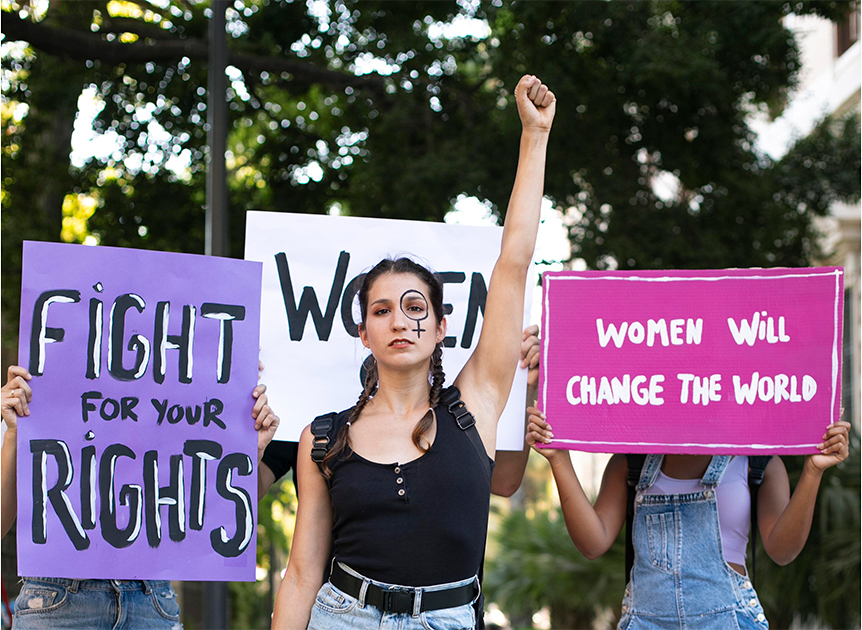While on paper, we are all free and equal, in practice bias like gender discrimination can exist in almost any community, especially in the education sector.
The Universal Declaration of Human Rights guarantees the intrinsic freedoms of every human being.
In other words, all humans are equal and are entitled to a life of equal opportunities regardless of race, nationality, culture, language, gender, age, social standing, religious or political opinions.
What is Gender Discrimination?

Gender discrimination is the display of bias against an individual or group of individuals based on their gender. Gender discrimination in education can be any unfavorable treatment directed at a specific gender or individuals based on perceived sexual orientation or gender identity.
From gender-based hiring practices to misgendering, physical or emotional abuse and unequal access to educational opportunities, many schools and universities remain hostile environments for those who do not conform to traditional gender norms.
What is sexual harassment?
The term “sexual harassment” refers to any inappropriate behavior (verbal or physical) motivated by a person’s sex or gender. In sexual harassment cases, both the victim and harasser may be the same sex, although more prevalent amongst members of the opposite sex.
Many recent movements, including #MeToo, have exposed sexual harassment in schools, encouraging institutions to take measures against discrimination.
Is sexual harassment a form of gender discrimination?

Sexual harassment is a crime, yet it’s the most prevalent form of discrimination that occurs in schools.
To address discrimination properly, educators must understand the different types of sexual harassment that can take place within an educational setting.
Often, sexual harassment can be subtle or indirect, making it harder to pin point. Examples of indirect sexual harassment include catcalls in the hallways, locker room rankings, gossip, ostracism or ‘canceling’.
More direct types of sexual harassment involve sharing nudes or making comments, jokes, and gestures that are sexual in nature.
Whether involving verbal or physical actions, it’s crucial for students, teachers, and administrators to understand the impact sexual harassment has on school culture and students.
Victims of sexual harassment often experience emotional and psychological trauma, which can affect their academic performance and overall well-being.
Besides understanding the different types of sexual harassment, it is important to also know how to lessen the occurrence of this form of discrimination.
How to solve gender discrimination in schools?
Overall, gender discrimination in education continues to be a major problem in many parts of the world.
Administrators wondering how to solve gender discrimination in schools need to remember that the process will be ongoing and dynamic. They must also bear in mind:
1. Raising awareness is paramount
Firstly, it’s important to educate ourselves and others on the issue.
Providing resources on consent is a good place to start because many students report feeling confused or not knowing how to respond to cases of sexual harassment. Part of the problem is that people don’t recognize gender discrimination when it happens.
By understanding what constitutes gender discrimination and sexual harassment, school administrations can work towards fostering respect amongst students.
2. Students need a safe learning environment
Most often, victims of gender discrimination and sexual harassment in schools do not report the incident for fear of being blamed.
This takes a huge toll on the victim’s mental health and can result in feeling anxiety, shame or aggression.
Victims in school usually suffer in silence. Most skip classes to avoid their harassers and many eventually drop out or switch schools.
To prevent this, school administrations need to create a safe and inclusive learning environment for all students.
3. Staff trainings are crucial
In schools worldwide, there is a culture of silence among staff who witness gender discrimination.
It is important to ensure that teachers and staff are properly trained to recognize and address instances of gender discrimination and sexual harassment.
Speaking out against sexual harassment among school staff can make a real difference in combating gender discrimination.
4. Campuses need clear complaint procedures
Schools should have policies and procedures in place to address incidents of sexual harassment and gender discrimination. This includes a prompt and effective response to incidents, as well as providing support and resources for victims.
It is essential to recognize and address instances of gender discrimination as quickly as possible. This ensures that all students can learn and work in a safe and accepting environment. Through proper education and awareness, we can work together to ensure that everyone has the opportunity to reach their full potential.
Did you enjoy reading this EDU Blog? Get access to exclusive content by signing up today!







